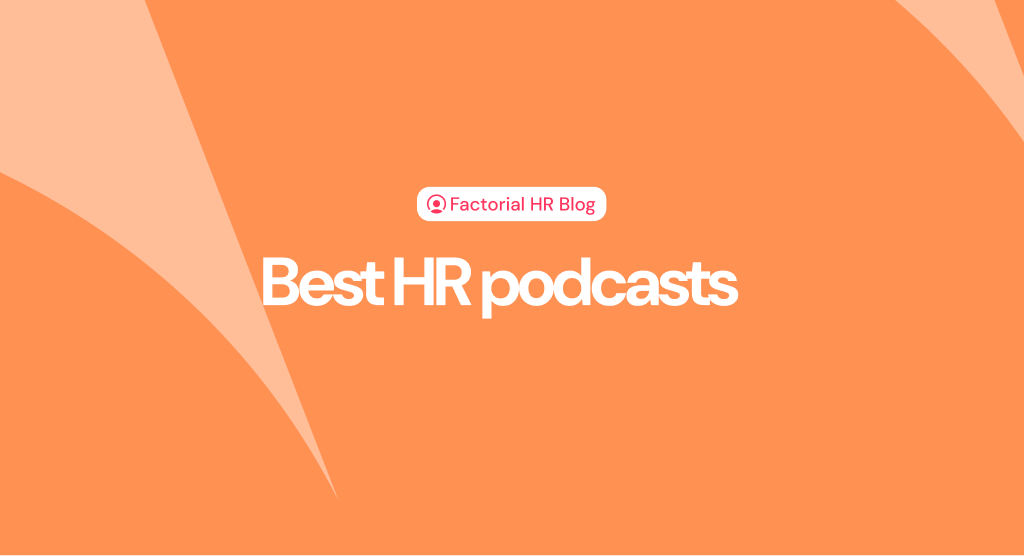Attracting and retaining top talent has become essential in the modern workplace. Talent acquisition, a crucial aspect of this, is helping many organizations overcome the talent gaps left by the Great Resignation.
But what is talent acquisition? And what is a talent acquisition manager?
Many people believe that recruitment and talent acquisition mean the same thing, but smart companies know there’s an important difference. Both approaches are necessary, but one is more tactical and the other is strategic.
In this article, we will define talent acquisition and explain how it differs from traditional recruitment. We will also explain what the process involves and explore how the right strategies and software can help you build a talented and productive workforce and drive long-term business success.
- What is talent acquisition?
- What is talent acquisition software?
- Talent acquisition specialist: Definition
- Recruitment vs. talent acquisition: What’s the difference?
- The talent acquisition process
- Talent acquisition strategies to keep in mind
- Finding the right HR & talent acquisition software
- Find and recruit top talent for your company ✅
What is talent acquisition?
The Great Resignation left a huge hole in the labor market. As a result, attracting and retaining top talent has never been so important. It has also led to a shift towards skills-based hiring in many industries in an attempt to hire candidates based on their specific skills and expertise, not just their qualifications. However, despite this fact, only 46% of HR leaders report recruiting as a top priority in 2023, and 36% say they don’t have the resources to recruit top talent.
This is where a talent acquisition strategy can help.
So, what does talent acquisition mean? Is talent acquisition part of HR?
Talent acquisition refers to the process of identifying, attracting, and acquiring skilled individuals to fulfill specific roles within an organization. It’s a more comprehensive approach to hiring that goes beyond traditional recruitment methods. Instead, HR talent acquisition focuses on strategic planning and long-term workforce needs.
Talent acquisition involves understanding the organization’s objectives, defining job requirements, sourcing candidates through various channels, evaluating their qualifications, and making informed hiring decisions. It also involves building strong employer branding, nurturing candidate relationships, and fostering a positive candidate experience. Ultimately, talent acquisition aims to secure top talent that aligns with the organization’s goals and contributes to its growth and success.
What is talent acquisition software?
Talent acquisition software, also known as recruitment and selection software or an applicant tracking system (ATS), is a technological platform that hiring managers can use to streamline and optimize the talent acquisition process. This type of solution includes tools and features that assist organizations in sourcing, screening, evaluating, and hiring candidates more efficiently.
So, which features are usually included?
Talent acquisition software typically includes functionalities for job posting and distribution across multiple platforms, resume assessment, keyword matching, automated candidate screening, and interview scheduling. Many also include collaboration tools for hiring teams, and recruitment analytics and reporting capabilities. Ultimately, these software solutions aim to centralize and automate the various stages of the talent acquisition process, saving time and effort for HR professionals and improving the overall hiring experience.
For example, Factorial’s comprehensive HRIS includes a talent acquisition platform that offers all these features. You can use the platform’s user-friendly and intuitive interface to centralize all your data, from job postings right through to onboarding and beyond. And best of all, you can adapt the software to the specific needs of your company. This helps you streamline your application process and improve the overall candidate experience, helping you attract and hire top talent efficiently and effectively.
Talent acquisition specialist: Definition
A talent acquisition specialist is an HR professional who specializes in identifying and acquiring top talent for an organization. Their primary responsibility is to manage the end-to-end talent acquisition process, from sourcing candidates to onboarding.
So, what does a talent acquisition specialist do?
The role of a talent acquisition specialist involves various tasks. They collaborate with hiring managers to understand job requirements, develop effective sourcing strategies, attract candidates, and build a solid talent pool. They screen resumes, conduct interviews, and assess candidate qualifications and cultural fit. Additionally, talent acquisition specialists often negotiate job offers, coordinate background checks, and ensure a smooth transition for new hires.
And how much does a talent acquisition specialist make?
The salary of a talent acquisition specialist can vary based on factors such as experience, location, and company size. According to data from Glassdoor, the average base salary for a talent acquisition specialist in the United States is around $63,297 per year. However, this can range from approximately $45,000 to $85,000 annually, depending on location, industry, and individual qualifications.
Recruitment vs. talent acquisition: What’s the difference?
Talent acquisition and recruitment are often used interchangeably, but they have distinct differences that are important to understand. Understanding these differences will help you develop effective strategies for both immediate hiring needs and long-term talent acquisition management.
Here’s a breakdown of how the two concepts differ.
Talent Acquisition:
- Focuses on a strategic, long-term approach to acquiring talent.
- Takes into account the organization’s overall workforce planning and future needs.
- Emphasizes building a talent pipeline and establishing relationships with potential candidates.
- Involves proactive sourcing methods, such as networking, employer branding, and talent engagement.
- Considers the cultural fit and alignment with the organization’s values.
- Aims to attract top talent and nurture them for future positions.
Recruitment:
- Primarily focuses on filling immediate job openings.
- Has a more tactical and reactive approach.
- Typically involves posting job advertisements and reviewing applications.
- Screening and evaluating candidates based on immediate job requirements.
- Concentrates on the selection and hiring process.
- Generally focuses on short-term solutions to meet current staffing needs.
The talent acquisition process
In this section, we will explore 7 essential steps in the talent acquisition process. Following this process will help you improve your recruitment and talent acquisition efforts and attract the best candidates to your organization.
Develop and enhance your employer brand
Developing and enhancing your employer brand is essential for attracting and retaining top talent.
Start by defining your employer brand if you haven’t done so already.
Here are a few things to keep in mind with this:
- Make sure your brand clearly expresses your organization’s mission, values, and unique differentiators.
- Craft an authentic brand story that resonates with potential candidates.
- Showcase your company culture, work environment, and employee benefits to provide insights into the employee experience.
- Use online platforms like your company website, social media, and professional networks to establish a strong online presence.
- Consistently share engaging content that highlights your employer brand and values.
- Foster employee engagement by creating a positive work environment where employees feel valued and involved.
- Encourage employees to share their experiences on social media, and participate in industry events.
- Ensure a positive candidate experience throughout the recruitment process, streamlining applications, providing updates, and offering feedback.
Prioritize networking
It’s also important to actively network to promote your employer brand. Networking is important as it helps you to establish connections with potential candidates, industry professionals, and other stakeholders. This helps you tap into a wider talent pool, gain valuable insights, and build relationships that can lead to referrals and future hiring opportunities.
Focus on attending industry events, joining professional groups, and leveraging online platforms. Be proactive in reaching out to potential candidates, industry peers, and thought leaders. Finally, engage in meaningful conversations, build genuine relationships, and establish yourself as a valuable resource in your field.
Build a solid talent pipeline
The next step in the process is building a solid talent pipeline. In other words, sourcing and attracting suitable candidates to your business.
Start by defining your ideal candidate personas. A candidate persona is a profile that outlines the skills and qualifications the ideal candidate must have for a specific position. You also need to consider your organization’s specific objectives and your long-term hiring needs.
Once you’ve done that, you can start searching for talent that aligns with each profile. Make sure you use a range of channels for this, including job boards, social media platforms, and professional networks. You should also create engaging job descriptions that clearly detail each role and communicate your employer brand consistently. And don’t forget the importance of encouraging employee referrals and building relationships within your industry to access a wider talent pool.
When you reach out to candidates, you should always personalize your outreach messages to demonstrate a genuine interest in candidates and capture their attention. This will help you enhance your candidate experience and improve your overall employer brand.
Finally, make sure you use the right tools and software to keep track of candidates and build a solid talent pipeline. More on this below.
Candidate assessment
Ok, so you’ve built a robust talent pipeline and you’ve contacted promising candidates. What’s next in the talent acquisition process?
This is where candidate assessment comes in.
Screening, interviewing, and assessing candidates is a crucial phase of talent acquisition. During the screening stage, review your applications and create a shortlist of candidates who meet the minimum qualifications. Look for relevant experience, education, and skills. Applicant tracking systems or screening tools can help you streamline this process.
Once you’ve created a shortlist, prepare a structured interview plan with well-defined questions that assess technical and behavioral skills. Conduct in-person or virtual interviews to evaluate knowledge, problem-solving abilities, and cultural fit. Use behavioral interviewing techniques to understand a candidate’s past performance and include assessments or tests to evaluate their skills. It’s also a good idea to include other members of your organization in this process, such as departmental managers or employees who have filled the position in the past. This will help you gather a range of perspectives and help you conduct a thorough evaluation. You can then use all this information to make informed decisions and select the best fit for your organization.
Validate references
Validating references is a crucial step in the talent acquisition process as it helps you gain additional insights into a candidate’s past performance and suitability for the role.
Contact the referee provided by the candidate, such as previous supervisors or colleagues, and schedule a discussion to discuss the candidate’s qualifications and work experience. Prepare a set of specific questions focused on their job responsibilities, performance, teamwork abilities, and areas for improvement.
During the reference check, ask about the candidate’s strengths, weaknesses, problem-solving skills, and ability to work collaboratively. Make sure you also verify that all the information the candidate has provided is correct. This included job title, employment dates, and responsibilities. Finally, ask the referee if they would rehire the candidate and if they have any reservations or concerns. Also make sure you take detailed notes during the reference check and compare this feedback with the candidate’s application, interview performance, and other assessments.
Select the best candidate
Once you’ve interviewed your shortlist and conducted all your background checks, it’s time to make your decision.
There are a few things to consider here to help you select the best candidate.
Firstly, make sure you conduct a thorough evaluation of their qualifications, skills, and potential for success. You also need to consider their experience, expertise, industry knowledge, and track record of success.
Cultural fit and soft skills are also essential, as is potential for growth, willingness to learn, adaptability, and long-term career goals. Including these aspects in your final evaluation will help you select a candidate who aligns with your organization’s values and culture. It will also make it easier to pick a candidate who will be able to communicate and collaborate with your existing workforce.
Onboard the new hire
The final stage in the process, once a selected candidate has accepted your offer, is onboarding. Onboarding a new employee is a crucial process that sets the tone for a new hire’s success and integration into the organization. The more positive and efficient your onboarding process is, the better your candidate and employee experiences will be.
Here are a few tips to help you enhance your onboarding process:
- Start by sending the new hire a personalized email, providing important information such as their start date and location.
- Prepare for their arrival by ensuring their workspace is ready, informing the team, assigning a buddy or mentor, and creating an onboarding schedule.
- Conduct a comprehensive orientation on their first day, introducing them to the company culture, policies, and their job responsibilities. Offer necessary training and resources.
- Encourage connections with colleagues through meet-and-greet sessions and team-building activities.
- Provide ongoing support and check-ins, addressing their questions and concerns, assigning a point of contact, and offering feedback and recognition.
Talent acquisition strategies to keep in mind
Let’s take a look now at a few additional talent acquisition strategies and recruitment tips to help you optimize your process and attract top talent to your business.
Create a structured recruitment funnel
Firstly, create a structured recruitment funnel to effectively manage and evaluate your candidates. Define clear stages such as sourcing, screening, interviewing, and offer negotiation.
It’s also a very good idea to use an applicant tracking system (ATS) to track candidate progress and organize your documents at each stage of the process.
Incorporate virtual recruitment strategies
Secondly, consider using virtual recruiting ideas to expand your talent pool. For example, you could use virtual job fairs and online networking events to connect with potential candidates. You should also be actively using social media and professional networking sites to build a more targeted talent acquisition strategy. And, perhaps most importantly, especially if you are hiring remotely, implement video interviews and virtual assessments to streamline the hiring process.
Develop diversity and inclusion initiatives
Another great strategy is developing diversity and inclusion initiatives to attract candidates from a diverse range of backgrounds. For example, you could establish partnerships with recruitment agencies that focus on underrepresented talent. This will not only help you build a more diverse workforce full of fresh perspectives but promoting your commitment to DEI will also do wonders for your employer brand.
Avoid gender bias
To the same effect, make sure you implement measures to avoid any claims of gender bias in your recruitment process. For example, you could implement blind resume screening to reduce unconscious bias during candidate evaluation. Or you could design gender-neutral job descriptions and advertisements to encourage equal opportunities.
Most importantly, you should train your managers so that they know how to recognize and overcome potential bias in the hiring process. This will help you avoid claims of discrimination and further boost your employer brand.
Launch an internal talent mobility program
Finally, you should consider launching an internal talent mobility program. This is a program that encourages the internal transfer of employees to other jobs within your company. This might include moving to other positions or projects, lateral job swaps, shadowing, or horizontal promotions.
Programs like this can be great for improving retention and helping you support the internal growth of your existing workforce. As a result, you will not only rely less on external talent acquisition, but you will also develop a reputation as a desirable place to work.
Finding the right HR & talent acquisition software
As we mentioned above, the key to success when it comes to acquiring and retaining talent is using the right tools and software to support your talent acquisition process. By picking a solution that offers a range of valuable features, you can greatly enhance your organization’s ability to attract, assess, and hire top talent efficiently.
For example, Factorial’s talent acquisition platform offers a comprehensive set of features designed to optimize the talent acquisition process.
Benefits include:
- Streamlined applicant tracking. You get access to a centralized hub to manage all your candidate applications, simplifying the screening and evaluation process. Your hiring managers can track each candidate’s progress, review resumes, and collaborate with hiring teams seamlessly.
- Automated job posting and distribution. Your hiring managers can effortlessly post job openings across multiple channels, including job boards and social media platforms, reaching a wider pool of potential candidates.
- Collaborative evaluations. Hiring teams can collaborate effectively by sharing candidate feedback, rating applicants, and ensuring a streamlined evaluation process. This collaborative approach promotes better decision-making and reduces the time-to-hire.
- Advanced analytics and reporting. You get access to a range of recruitment analytics and reports, helping you gain valuable data-driven insights into your talent acquisition strategy. This can help you identify bottlenecks, optimize your recruitment strategies, and improve overall hiring outcomes.
- Candidate relationship management. Finally, the platform includes tools for nurturing candidate relationships, including automated email communications and personalized candidate profiles. This helps you build a positive candidate experience that strengthens your employer brand.
Ultimately, Factorial’s talent acquisition platform can help you streamline and enhance each stage of your talent acquisition process. As a result, you will be able to identify, source, and attract the best candidates to your business, helping you build a talented and productive workforce and drive long-term business success.









